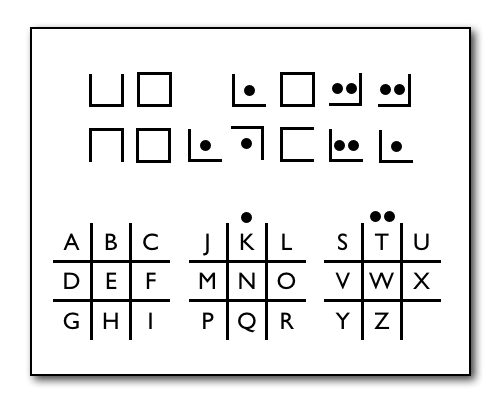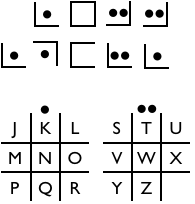
Solve the problem
This problem was inspired by an advertisement I saw in Wired Magazine. (Modified for this blog post). When I first saw the page, I realized I was looking at a puzzle, but I wasn’t sure what I was supposed to do. Then I “got” what was going on and I figured it out.
The key to solving a problem often lies with finding a pattern. That’s a very human skill. Even newborns can soon recognize faces. As Jon Medina has said “We…are terrific pattern matchers, constantly assessing our environment for similarities, and we tend to remember things if we think we have seen them before.”
It’s a pity we don’t do a better job of teaching pattern recognition in school. Uncovering an underlying pattern is essential to constructing meaning. In school we typically “teach” patterns to students as “facts,” rather than ask students to discover the pattern for themselves. Of course this strips the activity of its real value as a learning strategy, and turns into just another thing to memorize. Asking students to file some pre-selected information into a graphic organizer isn’t analysis – it’s just moving stuff around. True analysis involves doing the challenging work of trying to make sense of information. Powerful learning occurs when students have to answer questions like - Is this a sequence? Is it cause and effect? How would I organize this material into categories? Could I explain my system to someone else? Exactly the type of skills that are demanded by the new Common Core standards.
Enough commentary, have you solved the problem yet?
Credit: Inspired by CenturyLink ad in Wired Magazine, October 2011 p. 148

